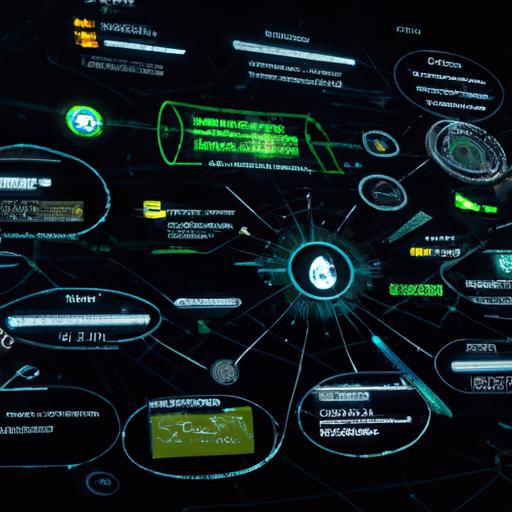Introduction
In a world where cyber threats lurk around every digital corner, the need for robust cybersecurity measures has never been more critical. Enter the realm of cyber threat intelligence platforms, a cutting-edge solution designed to arm organizations with the necessary tools to combat evolving cyber threats. But what exactly is a cyber threat intelligence platform?
Defining the Cyber Threat Intelligence Platform
A cyber threat intelligence platform is a sophisticated system that aggregates, analyzes, and interprets vast amounts of data to provide organizations with real-time insights into potential security risks and vulnerabilities. By harnessing the power of advanced algorithms and threat intelligence feeds, these platforms offer a comprehensive view of the ever-changing threat landscape, empowering businesses to proactively defend against malicious cyber activities.
The Imperative of Utilizing a Cyber Threat Intelligence Platform
In today’s hyper-connected digital ecosystem, the stakes are higher than ever when it comes to safeguarding sensitive data and infrastructure. By leveraging a cyber threat intelligence platform, organizations can stay one step ahead of cybercriminals, identify potential threats before they materialize, and fortify their defenses against sophisticated cyber attacks. The proactive approach offered by these platforms not only enhances security posture but also minimizes the impact of security incidents, ultimately safeguarding the integrity and reputation of the organization.
Benefits of Utilizing a Cyber Threat Intelligence Platform
Improved Threat Detection and Prevention
Deploying a cyber threat intelligence platform equips organizations with a proactive defense mechanism that enhances threat detection and prevention capabilities. By continuously monitoring and analyzing data from various sources, these platforms can swiftly identify potential security risks and vulnerabilities before they manifest into full-fledged cyber attacks. This real-time threat intelligence empowers organizations to take preemptive action, fortifying their cybersecurity posture and mitigating the impact of potential breaches.
Enhanced Incident Response Capabilities
In the event of a security incident, the ability to respond swiftly and decisively is paramount to minimizing damage and restoring normal operations. A cyber threat intelligence platform enhances incident response capabilities by providing organizations with actionable insights and intelligence to effectively combat threats. With automated threat detection and response mechanisms, security teams can quickly isolate and neutralize threats, reducing the time to detect and respond to security incidents significantly.
Reduction of Security Risks and Vulnerabilities
By proactively identifying and addressing potential security risks and vulnerabilities, a cyber threat intelligence platform enables organizations to bolster their defenses and reduce exposure to cyber threats. Through continuous monitoring, analysis, and threat intelligence feeds, these platforms empower organizations to stay ahead of cybercriminals and thwart potential attacks before they compromise critical assets. This proactive approach not only strengthens overall security posture but also minimizes the likelihood of successful cyber intrusions, safeguarding the organization’s digital assets and reputation.
Cost-Effective Security Solution
In today’s dynamic threat landscape, investing in robust cybersecurity measures is non-negotiable. However, traditional security solutions can be costly and resource-intensive to implement and maintain. A cyber threat intelligence platform offers a cost-effective security solution by streamlining threat detection and response processes, reducing manual intervention, and optimizing resource allocation. By leveraging automation and intelligence-driven insights, organizations can achieve a higher return on investment in cybersecurity, enhancing protection against cyber threats while optimizing operational efficiency and cost-effectiveness.
Best Practices for Implementing a Cyber Threat Intelligence Platform
Establishing Clear Objectives and Goals
Before embarking on the implementation of a cyber threat intelligence platform, it is essential to define clear objectives and goals. By outlining specific outcomes and key performance indicators, organizations can align their cybersecurity efforts with strategic business objectives. Whether the focus is on threat detection, incident response, or risk mitigation, setting clear goals will guide the deployment and utilization of the platform effectively.
Training and Educating Staff on Platform Usage
One of the critical factors in the successful implementation of a cyber threat intelligence platform is ensuring that the staff is well-trained and educated on the platform’s functionalities and capabilities. Providing comprehensive training sessions and educational resources will empower employees to leverage the platform effectively, interpret threat intelligence data accurately, and respond to security incidents promptly. By investing in staff training, organizations can maximize the value and impact of their cyber threat intelligence platform.
Regularly Updating and Maintaining the Platform
To ensure the continued effectiveness of a cyber threat intelligence platform, it is crucial to prioritize regular updates and maintenance. Cyber threats evolve rapidly, making it essential to stay ahead of emerging risks and vulnerabilities by keeping the platform up to date with the latest threat intelligence feeds and security patches. Regular maintenance tasks, such as system upgrades, data backups, and performance monitoring, will help optimize the platform’s performance and enhance overall security posture.
Collaborating with Other Security Teams and Organizations
In the complex landscape of cybersecurity, collaboration is key to effectively combatting cyber threats. Organizations should foster strong partnerships and collaboration with other security teams, industry peers, and threat intelligence sharing communities. By sharing insights, best practices, and threat intelligence data, organizations can enhance their collective defense capabilities, strengthen cybersecurity resilience, and stay informed about emerging threats and trends. Collaborative efforts can amplify the impact of a cyber threat intelligence platform and create a united front against cyber adversaries.




